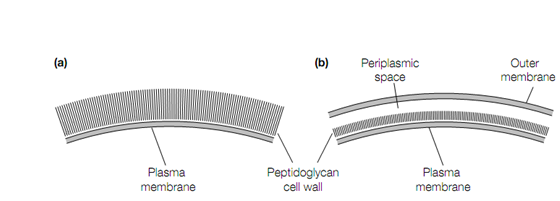Bacterial Flagella
A lot of bacterial cells have one or more tail-like appendages known as flagella. bacteria can move through the extracellular medium towards attractants and away from repellents, By rotating their flagella so called chemotaxis. Bacterial flagella are different from flagella and eukaryotic cilia in two ways:
(1) Each bacterial flagellum is composed of the protein flagellin (53 kDa subunit) as opposed to tubule in and
(2) it rotates rather than bends.
An E. Coli bacterium on the surface of the cell has approximate six flagella that emerge from various positions. Flagella are thin helical filaments which is 15 nm in diameter and 10 μm long. Electron microscopy has revealed that the flagellar filament have eleven subunits in 2 helical turns which, when viewed end-on, has the appearance with a hollow central core of an 11-bladed propeller. By the addition of new flagellin subunits to the end away from the cell Flagella grow, with the new subunits diffusing through the central core. membrane is the flagellar hook composed of subunits of the 42 kDa hook protein that forms a short, curved structure Between the flagellar filament and the cell which Situated in the plasma membrane is the flagellar motor or basal body, an intricate assembly of proteins. The flexible hook is associated to a series of protein rings which are embedded in the outer and inner membranes. By a flow of protons the rotation of the flagella is driven through an outer ring of proteins, known the stator. In the F1F0-ATPase a similar proton- driven motor is found that synthesizes ATP.

Cell wall structure of (a) Gram-positive and (b) Gram-negative bacteria.